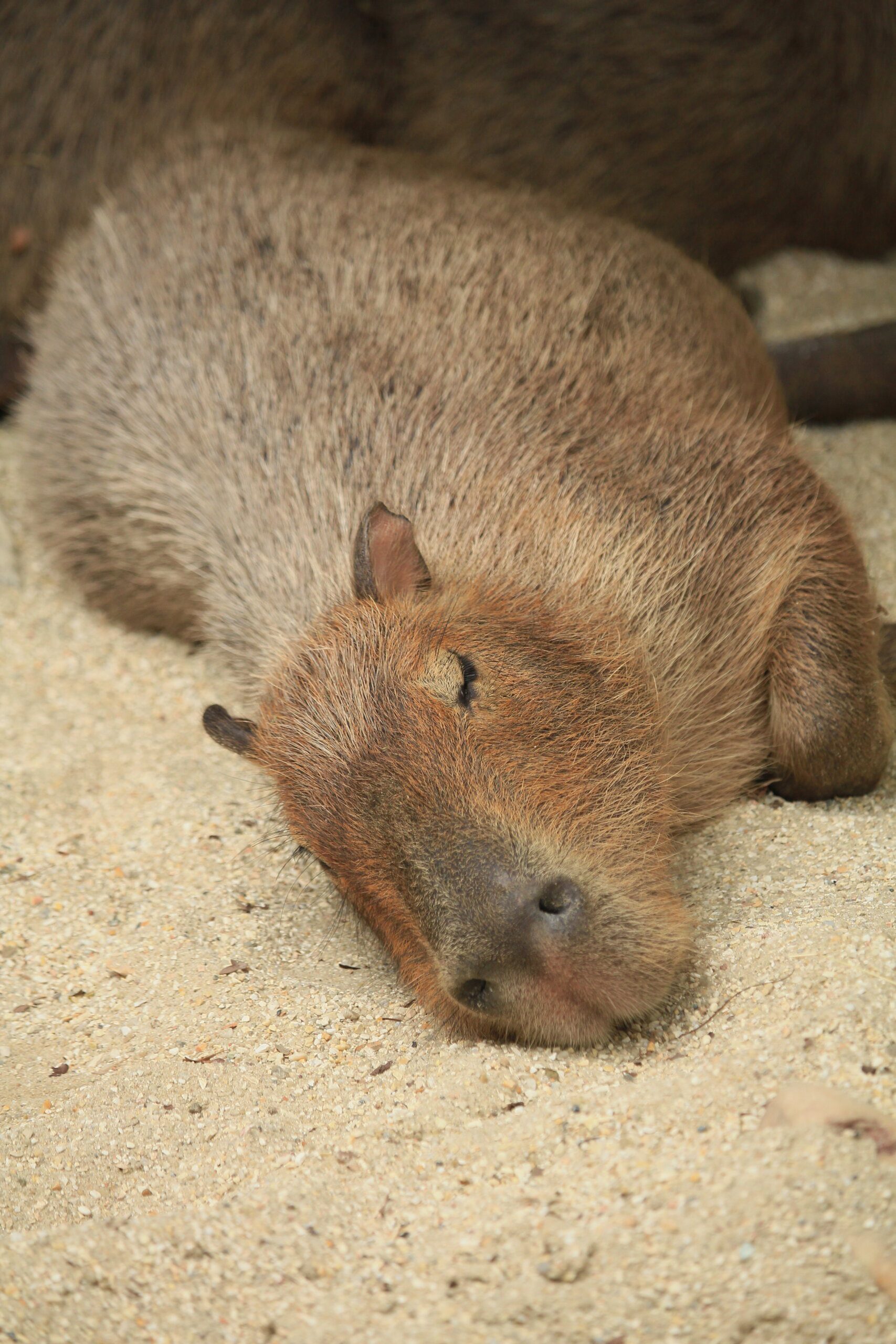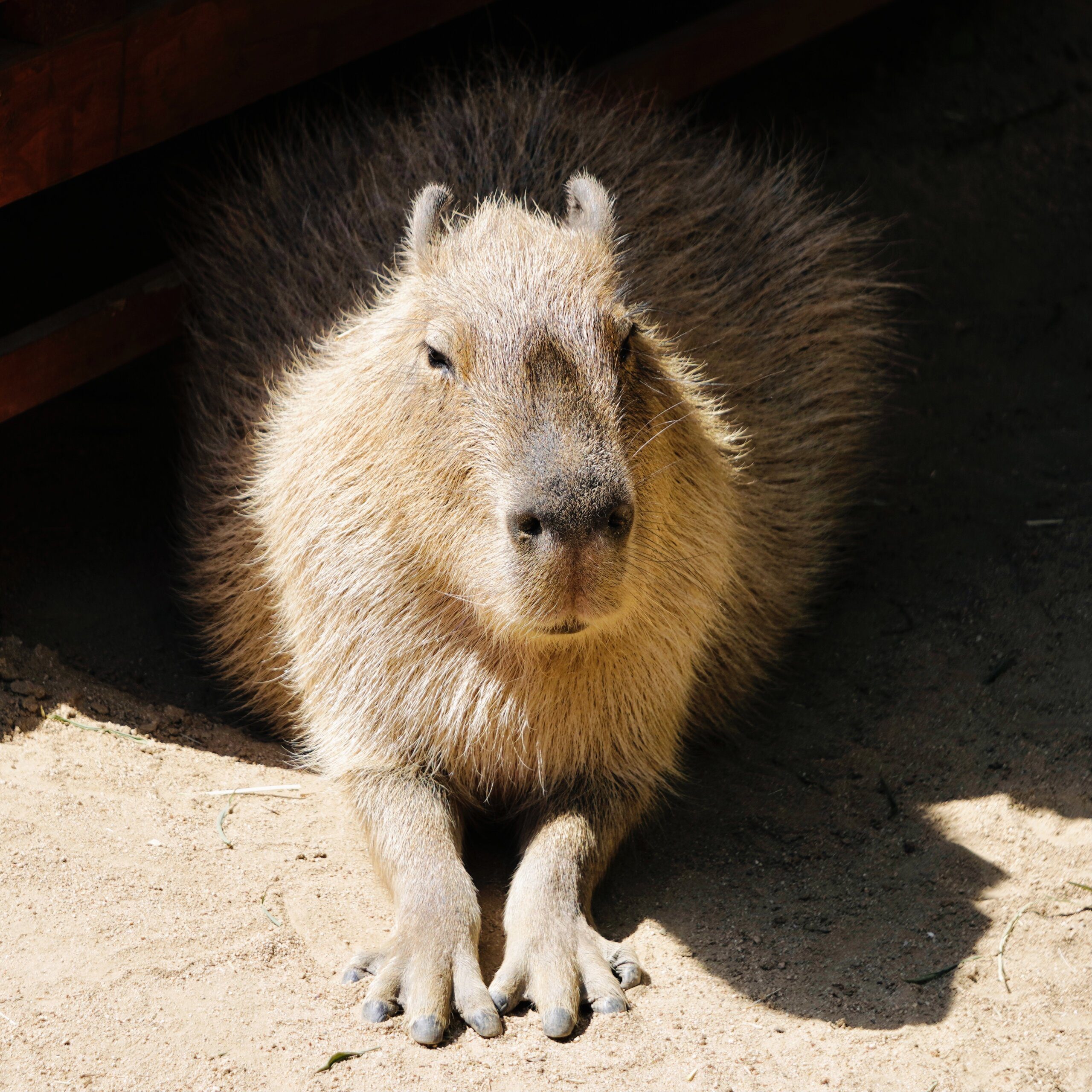Imagine a fascinating world where lush green fields and tranquil rivers are your daily playground, and where socializing and basking in the sun are your favorite pastimes. Welcome to the extraordinary life of a capybara, the world’s largest rodent. Known for their friendly nature and captivating presence, capybaras lead a serene existence in their natural habitats across South America. From grazing on grasses to swimming in the water, these gentle giants have a unique way of embracing life that will leave you captivated. So, take a moment to immerse yourself in the remarkable world of a capybara and discover what makes their daily routines truly extraordinary.
Physical Characteristics

Size
Capybaras are the largest rodents in the world and can grow to be about 3 feet (1 meter) tall and weigh up to 150 pounds (68 kilograms). They have a robust and stocky build, with a barrel-shaped body that is well-adapted for swimming.
Shape
With their long, sturdy limbs and short tail, capybaras have a distinctive appearance. Their front legs are slightly shorter than the hind legs, enabling them to navigate in water with ease. Capybaras also possess webbed feet, which aid in swimming and moving across muddy terrain.
Coloration
Capybaras have a coarse and short hair coat that varies in color. Typically, their fur is a brownish-gray hue, although it may appear reddish or yellowish in certain individuals. This coloration acts as camouflage, allowing them to blend into their surroundings and avoid potential predators.
Habitat
Geographical Range
Capybaras are native to South America and can be found throughout a vast range of countries, including Brazil, Venezuela, Colombia, and Argentina. They primarily inhabit wetlands, marshes, and forested areas near bodies of water such as rivers, lakes, and ponds.
Type of Environment
These semi-aquatic creatures thrive in tropical and subtropical regions, where they have access to both water and land. Capybaras are well-adapted to their habitat, as their webbed feet enable them to swim proficiently and their dense fur coat provides insulation in various climatic conditions.
Social Structure
Group Dynamics
Capybaras are highly social creatures and typically live in large herds, known as “capybara communities.” These communities can comprise up to 100 individuals. Within a group, there is a sense of camaraderie, and capybaras often engage in activities together, such as feeding and grooming.

Hierarchy
Within capybara communities, a strict hierarchy exists. The dominant male, known as the alpha, maintains control over the other members of the group. The alpha male has access to the best feeding and mating opportunities, while lower-ranking individuals must adhere to a pecking order and work their way up through social interactions.
Diet
Herbivorous Diet
Despite their large size, capybaras are herbivores and feed primarily on plant matter. Their diet consists of various grasses, aquatic plants, and fruits. Capybaras have specialized digestive systems that allow them to efficiently extract nutrients from a plant-based diet.
Favorite Foods
Capybaras particularly relish aquatic vegetation, including water hyacinths and water lettuce. They are also known to graze on grasses, leaves, and bark. Their preference for water-rich plants is due to their semi-aquatic lifestyle and the abundance of such vegetation in their habitat.
Reproduction
Mating Behavior
Capybaras engage in a polygamous mating system, where one male mates with multiple females within the herd. During the breeding season, which can occur throughout the year, males compete for dominance to establish their place in the hierarchy and secure reproductive opportunities.
Gestation Period
After a successful mating, the female capybara undergoes a gestation period of approximately 150 days, which is around five months. This period is relatively long compared to many other rodents.
Number of Offspring
Capybaras typically give birth to a litter of three to eight offspring, although larger litters have been recorded. The newborns, called pups, are precocial, meaning they are relatively well-developed and able to walk shortly after birth.
Communication

Vocalizations
Capybaras communicate through a variety of vocalizations, including purring, whistling, and barking. Purring is often heard during social interactions and grooming sessions, while whistling and barking are used to alert the group to potential threats or danger.
Body Language
Capybaras also rely on body language to convey messages within their social group. This includes postures such as stretching, wagging their tails, and raising their heads, which can indicate various emotional states or intentions to other members of the herd.
Behavior
Activity Patterns
Capybaras are diurnal animals, meaning they are most active during daylight hours. They spend their time foraging for food, engaging in social interactions, and basking in the sun. However, they may also exhibit crepuscular behavior, being active during the early morning and late afternoon.
Swimming Abilities
One of the remarkable abilities of capybaras is their aptitude for swimming. They are swift and agile swimmers, using their webbed feet and streamlined body to navigate through the water with grace. Swimming is not only a means of transportation but also a way to escape from predators and stay cool in hot weather.
Territorial Behavior
Capybaras have a well-defined territory within their habitat, which they mark with scent glands located on their nose and anal area. Males are particularly territorial and will defend their space from rival males, although conflicts are typically resolved through social posturing rather than physical confrontations.
Predators and Threats
Natural Predators
Capybaras have several natural predators in their native range, including jaguars, pumas, caimans, and large snakes such as anacondas. Their size and social structure help provide some protection against predation, as the presence of many eyes and ears within the herd increases the chances of detecting a threat.
Human-Related Threats
Human activities pose a significant threat to capybara populations in certain areas. Habitat loss due to deforestation, pollution of water sources, and hunting for their meat and hide are some of the primary challenges faced by capybaras. The encroachment of human settlements and agriculture can disrupt their natural habitat and limit their access to resources.
Conservation Status
Endangered or Not
Currently, capybaras are classified as a species of “Least Concern” by the International Union for Conservation of Nature (IUCN). While specific populations may face localized threats and declines, the overall capybara population remains stable throughout its range.
Protection Initiatives
In some countries, capybaras are protected by legislation that prohibits their hunting, trade, or capture without permits. These protective measures aim to ensure the continued survival of the species and maintain the ecological balance of their habitats. Efforts are also being made to raise awareness about the importance of conserving capybaras and their unique role in the ecosystem.
Interactions with Humans
Domestication
Capybaras have not been domesticated on a large scale, though there are reports of individuals being kept as pets in some regions. Due to their social and aquatic nature, capybaras require specialized care and a suitable environment to thrive in captivity.
Role in Indigenous Cultures
Throughout history, capybaras have played a significant role in the cultures of indigenous communities in South America. They are often associated with water-related rituals, folklore, and traditional medicine. Capybaras hold cultural and spiritual importance, symbolizing traits such as adaptability, harmony with nature, and communal living.
In conclusion, the capybara is a fascinating creature with unique physical characteristics, remarkable social behavior, and significant ecological importance. While facing certain threats from both natural predators and human activities, capybaras continue to adapt and thrive in their habitat. By understanding and appreciating these remarkable animals, we can contribute to their conservation and ensure their continued existence for future generations.



